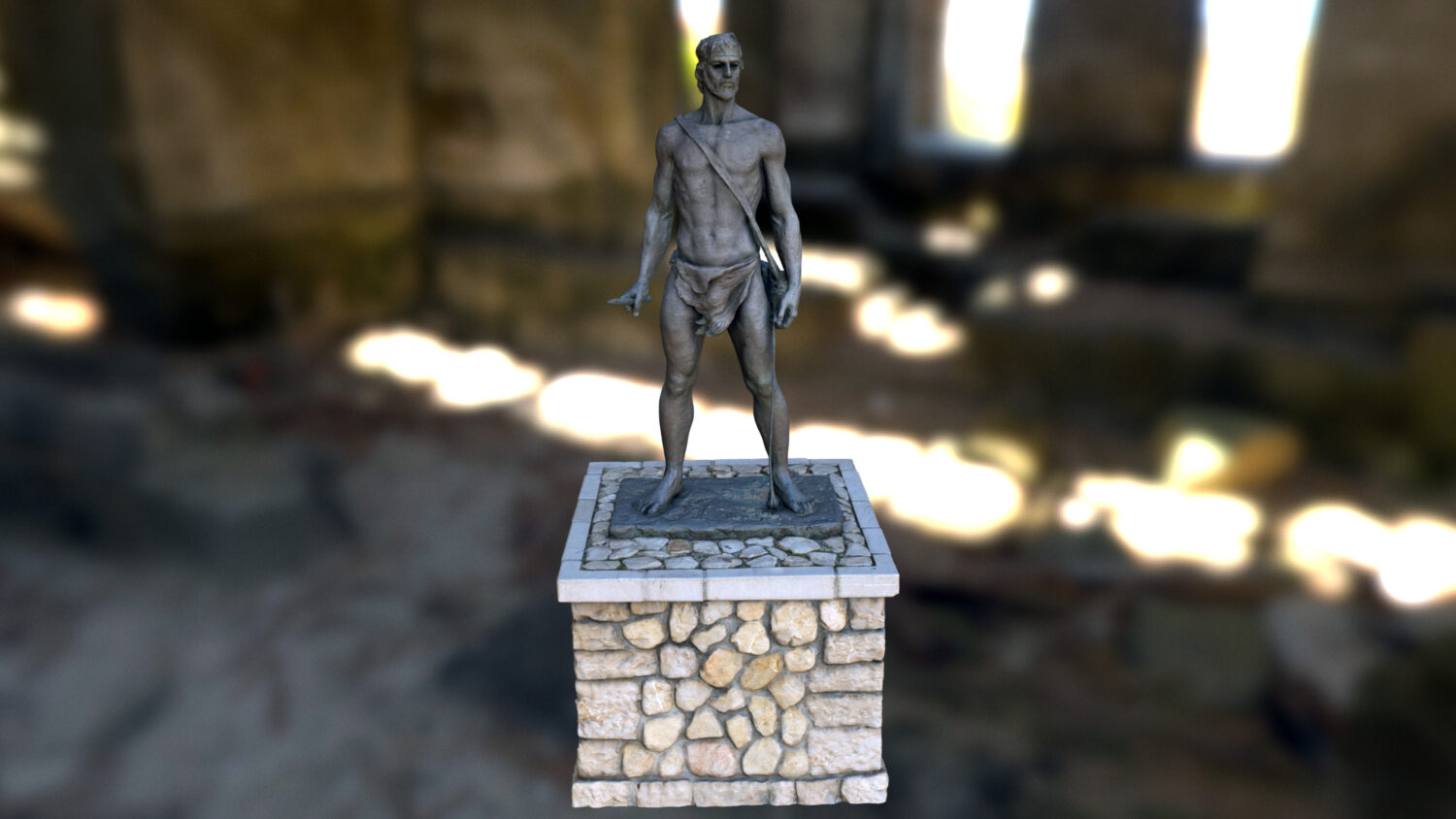Statue of David, Felanitx Mallorca
David is a Statue of a Balearic Slinger, or slingshot warrior located in Felanitx, Mallorca Spain. The Balearic Islands are a Spanish archipelago in the Mediterranean Sea that are known as tourist destinations, with the islands of Ibiza and Mallorca being the most popular.
It is said that the name for the Balearic Islands originated from the Greek word “ballo” which means “to launch.” and the stone slingers (“honderos” in Castellano or “foners” in Catalan) played an important role in the history of Mallorca.
Stone slinging (or sling shooting) existed in the Mediterranean since about 6oo B. C.. Originally this technique was used for hunting, and later as a defense against attacking intruders. The Balearic slingers were exceptionally skilled stone slingers and were highly sought after known for bringing “invisible death” to ancient battlefields. A highly coveted asset, they were game-changing warriors on the battlefield where they were able to launch bullets at up to 160 kilometers per hour that could hit opponents up to 400 meters away.
An experienced slinger could make seven shots per minute, with bullets made from stone, lead, or clay. Often, the bullets contained inscriptions such as a lightning bolt, snake, or scorpion and some had holes which give off a buzzing sound, like an agitated wasp, an early form of psychological warfare.
During the Second Punic War (218-201 BCE), the Carthaginian general Hannibal had great success fighting against the Roman army backed by the Numidian cavalry with its battle elephants, and the invisible killers — the Balearic slingers that worked as mercenaries. When the Romans defeated the Carthaginians the slingers were allowed to become a part of the Roman legions where they taught the legionnaires how to use slings.
When the Romans arrived in Menorca in 123 B.C. it is said that they were unable to dock on the Menorcan coasts because of “a great cloud of stones” that fell at high speed from the sky and severely damaged their ships. Eventually they devised a way to cover their ships with leather skins and when they settled on the island, they reached an agreement with the warriors to fight among their ranks.
The use of slings slowly faded away as it took years of practice to train warriors to efficiently use them as a weapon. In the Middle Ages they were replaced by bowmen who were much easier to train. Eventually, bows were replaced by firearms, the usage of which could be taught in a matter of weeks.










